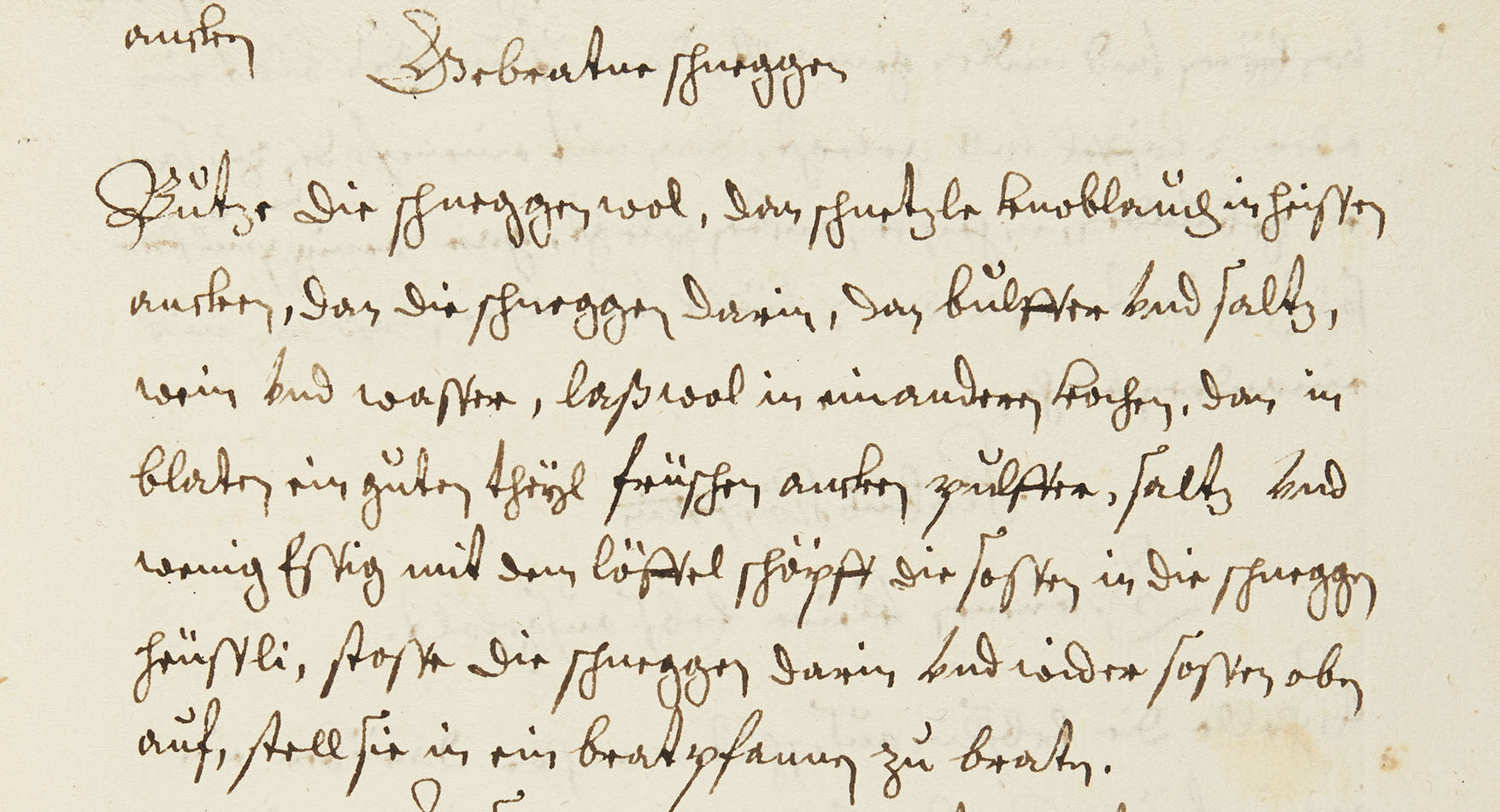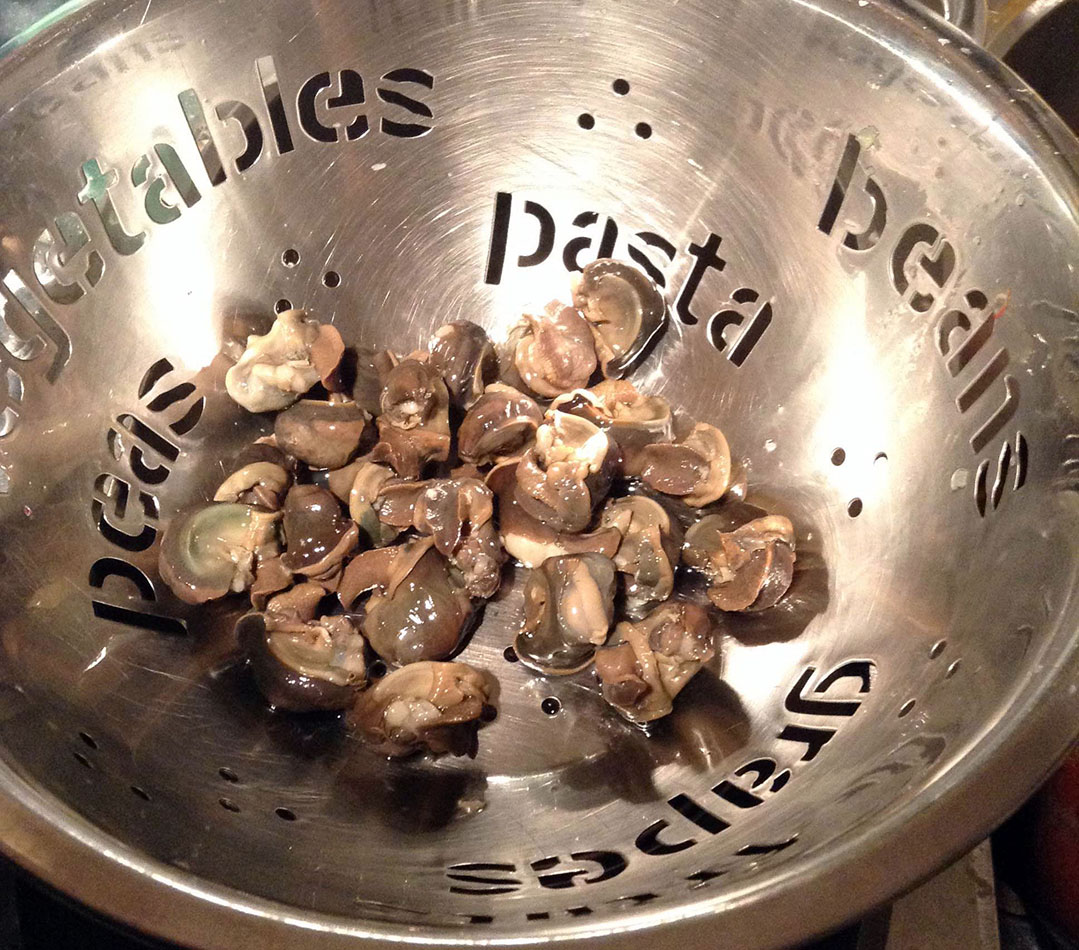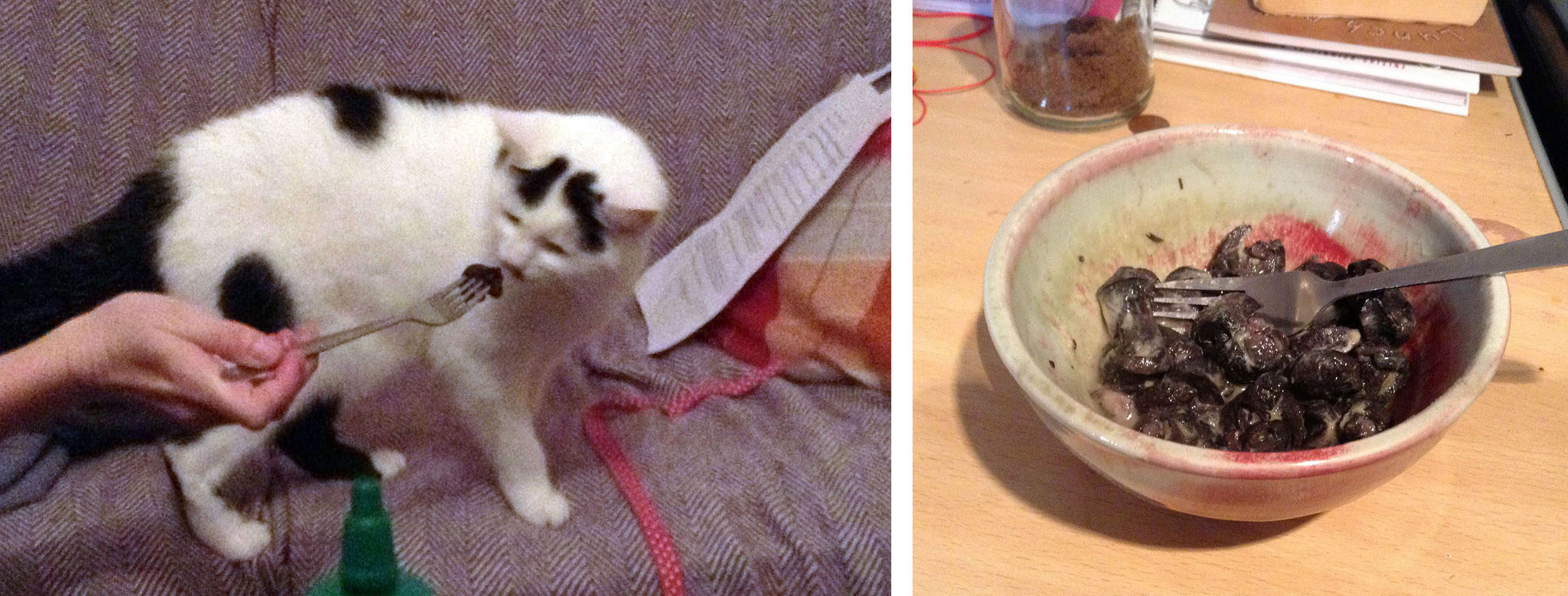Historical Cooking, Week 6: Fried Snails
This week Sean is brave enough to attempt a fried snail dish from our recipe book – the complete manuscript is available for viewing on our Digital Collections Portal
This week we tried fried snails – seeing as the chef hadn’t eaten escargots in any form, renaissance style or contemporary, this seemed like a good opportunity to give them a go.
Though garden snails can apparently be safely eaten, it was decided that professionally-farmed snails might be a better option for the first-timer. These were ordered from France and duly arrived in a can.

Unfortunately they were already de-shelled, which meant that the recipe could not be followed to completion – the final stage requires that the snails are put back in to their shells:
Butze die shneggen wol, dan shnitzle Knoblauch in heissen ancken, dan die shneggen darin, dan bulffer vnd saltz, wein vnd wasser, laβ wol in einander kochen, dan in blaten ein guten theyl freshen ancken pulffer, saltz vnd wenig essig mit den löffel shäpff die sossen in die shneggen heüssli, stosse die shneggen darin vnd wider sossen oben auf, stell sie in ein bratpfannen zu braten.
Clean the snails well, then cut garlic into hot butter, then add the snails, then pepper and salt, wine and water, let it all cook together well, then add a good amount of fresh butter to the pan, pepper, salt and a little vinegar, using a spoon pour the sauce into the shells, put the snails back in and pour more sauce on top, and put them into a frying pan to fry.

The snails were a little smelly and slimy and didn’t yet look very appetising – cleaning them helped with the smell but not so much with the appearance.

Frying them in butter and garlic improved the smell and texture, and after soaking up the red wine they were no longer recognisable as snails.

The recipe gives no measurements or cooking times, relying entirely on the experience and common sense of the chef – which may have been an error in this case! Working by eye, it seemed that the snails were getting overcooked after a few minutes, so it was decided to remove them from the pan and serve them up.
After a sous-chef had examined the dish with a sniff test, we went ahead and tasted the results.

The mouth-feel of the snails was much better than expected and didn’t activate the gag reflex – they had the texture of gristly chipolatas, with a little bit of extra crunch from residual shell. They weren’t all that flavourful though – it might have been a better idea to leave them in the sauce a little longer.
Our Portuguese colleague suggested that snails might be better prepared in a slow cooked broth rather than fried, so that they have some time to absorb the flavour – this might be a better option next time around. Apparently it is also traditional to cook the snails while they are alive, if you can face it.
So next time you need a starter or a snack, investigate your garden and consider some variation on this 16th century recipe – you may be surprised.
Sean Rippington
Digital Archives Officer
What fun and how brave!!
Thanks, it was a lot of fun! Let us know if you have a go yourself.